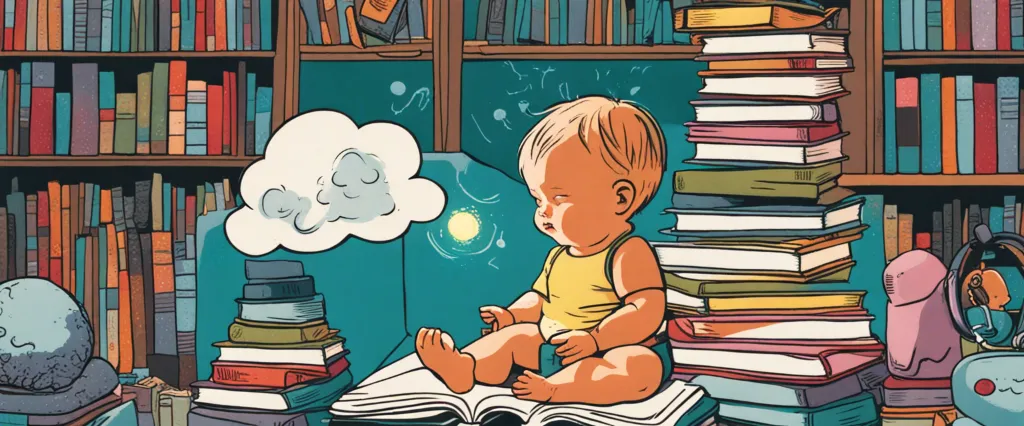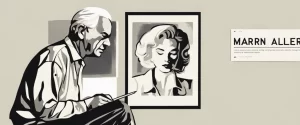
In today’s fast-paced technological era, where screens dominate our daily lives, we often forget the extraordinary power of books and the profound impact they can have on our lives. The Read-Aloud Handbook by Jim Trelease and The Baby Book by William Sears are two exceptional literary works that explore the limitless potential of reading and parenting, each offering unique insights and practical advice.
In The Read-Aloud Handbook, Jim Trelease delves into the extraordinary benefits of reading aloud to children, from newborns to teenagers. With a compelling blend of personal anecdotes, research findings, and expert recommendations, Trelease presents a compelling case for the importance of this seemingly simple act. He emphasizes the transformative role of reading aloud in fostering language development, enhancing critical thinking skills, and nurturing a lifelong love for books. As an advocate for the power of storytelling, Trelease provides valuable guidance on selecting age-appropriate literature, techniques for engaging young listeners, and strategies for integrating reading into everyday routines.
On the other hand, The Baby Book by William Sears is an authoritative guidebook that focuses on the holistic approach to parenting, particularly during the early formative years. Sears, a renowned pediatrician, together with his wife Martha Sears, a registered nurse, ensures their readers are well-equipped with the necessary knowledge and tools to navigate the complexities of parenthood. In this comprehensive manual, they touch upon various aspects of parenting, including breastfeeding, sleep habits, child development, and nurturing a strong parent-child bond. Sears advocates for responsive parenting, emphasizing the significance of empathetic and understanding interactions between parents and their babies to promote healthy emotional and cognitive growth.
While both Trelease and Sears have distinct focuses in their respective books, a comparative study between The Read-Aloud Handbook and The Baby Book reveals noteworthy overlaps in their underlying philosophies. Both authors share a belief in the power of parental influence and the importance of establishing strong connections with children early in their lives. Moreover, they recognize reading as a powerful tool for communication, development, and bonding within the parent-child relationship.
This comparative study aims to explore the key similarities and differences between these two renowned works, shedding light on the shared ideals that drive their narratives, as well as their divergent perspectives on specific issues surrounding parenting and childhood development. By analyzing the strengths and weaknesses of each book, this study intends to provide readers with a deeper understanding of the multifaceted aspects of child-rearing and the pivotal role literature plays in this journey.
Through the exploration of The Read-Aloud Handbook and The Baby Book, this comparative study seeks to highlight how the magic of storytelling and attentive parenting can shape the lives of children and foster a sense of wonder, curiosity, and lifelong learning. By examining the insights presented within these invaluable literary works, readers can gain a comprehensive perspective on the rich benefits of reading aloud and intentional parenting, ultimately equipping themselves with the knowledge and tools necessary to create a nurturing environment for their children’s growth and development.
Brief Summary of Two Books
The Read-Aloud Handbook by Jim Trelease
The Read-Aloud Handbook by Jim Trelease is a comprehensive guide that emphasizes the importance of reading aloud to children. It provides practical advice, research, and personal anecdotes to support the argument that reading aloud is the key to a child’s future success in school and life.
The book begins by discussing the benefits of reading aloud, such as fostering a love for reading, building vocabulary, and improving listening skills. Trelease explores the research behind these benefits and highlights the positive impact of reading to children from a young age.
Trelease then dives into various strategies and techniques for effective read-aloud sessions. He offers suggestions on book selection, reading with expression, and engaging children in discussions before, during, and after reading. The author also addresses common challenges that parents or educators may face during read-aloud sessions and provides practical solutions.
In addition, The Read-Aloud Handbook provides a wealth of resources, including an extensive and annotated list of recommended books for different age groups, reading levels, and interests. Trelease also includes information on incorporating reading into daily routines, overcoming reading difficulties, and encouraging reluctant readers.
Throughout the book, Trelease shares inspiring stories from parents, teachers, and celebrities who have experienced the transformative power of reading aloud. He emphasizes that reading aloud is a gift parents can give their children and encourages making it a regular and enjoyable part of family life.
In summary, The Read-Aloud Handbook is a valuable resource for parents, educators, and anyone interested in nurturing a love for reading in children. It highlights the benefits of reading aloud, provides practical strategies, and offers an extensive list of recommended books, all aimed at creating lifelong readers and enthusiastic learners.
The Baby Book by William Sears
The Baby Book by William Sears is a comprehensive and practical guide for new parents. It covers various aspects of parenting, including pregnancy, childbirth, breastfeeding, sleep, nutrition, and development.
The book emphasizes the concept of attachment parenting, which focuses on building a strong emotional bond between parent and child. It encourages parents to be responsive and nurturing, allowing for secure and healthy attachment. Sears also emphasizes the importance of breastfeeding, co-sleeping, and carrying the baby in a sling or carrier.
The Baby Book contains a wealth of information on newborn care, including tips for soothing a fussy baby, breastfeeding techniques, and guidance on introducing solid foods. It also provides insight into infant development, discussing milestones, playing, and promoting learning.
Additionally, the book addresses common concerns and challenges faced by parents, such as colic, teething, and sleep issues. It offers gentle and natural approaches to managing these difficulties.
Overall, The Baby Book provides a comprehensive resource for new parents, guiding them through the early years of their child’s life with an emphasis on building a strong parent-child connection and offering practical advice for various parenting challenges.
Comparison between Two Books

Similarities in toddler
In both The Read-Aloud Handbook by Jim Trelease and The Baby Book by William Sears, the authors touch upon the importance of interactions and communication with toddlers. Both books emphasize the significance of actively engaging in conversation and reading with children at a young age to help foster language development and intellectual growth.
Firstly, both authors highlight the benefits of reading aloud to toddlers. Jim Trelease suggests that reading aloud not only introduces children to the joy of books but also helps to develop their listening skills, vocabulary, and comprehension abilities. Similarly, William Sears explains that reading to toddlers facilitates language acquisition, stimulates their imagination, and strengthens the bond between parent and child. Both books assert that reading aloud is an important activity that encourages toddlers to explore the world of language and empowers them to become lifelong readers.
Additionally, both books suggest that interactive conversations with toddlers are crucial for their cognitive and emotional development. Jim Trelease emphasizes the importance of having discussions with toddlers about the stories being read, encouraging them to ask questions and express their thoughts and feelings. Similarly, William Sears advocates for open communication with toddlers, emphasizing the significance of validating their emotions, actively listening to their concerns, and providing age-appropriate explanations. Both books contend that these conversations not only support intellectual growth but also enrich the parent-child relationship.
Furthermore, both authors emphasize the role of consistency and routine in a toddler’s life. Jim Trelease recommends establishing read-aloud sessions as regular daily activities to develop a habit in children that will continue into adulthood. Likewise, William Sears suggests the benefits of consistent schedules and routines for toddlers, as they provide a sense of security and aid in their overall development. Both books advocate for creating stable environments that promote healthy habits and foster a sense of predictability for toddlers.
In conclusion, both The Read-Aloud Handbook by Jim Trelease and The Baby Book by William Sears highlight the significance of engaging with toddlers through reading aloud, interactive conversations, and establishing consistent routines. The similarities between these books underscore the importance of nurturing a toddler’s language, cognitive, emotional, and social growth through active involvement and communication.
Divergences in toddler
The Read-Aloud Handbook by Jim Trelease and The Baby Book by William Sears are two popular parenting books that offer guidance and advice to parents in different areas. While both books provide valuable insights, they approach the topic of toddlers from divergent angles.
The Read-Aloud Handbook primarily focuses on the importance of reading aloud to children and its numerous benefits. Trelease emphasizes the significance of early exposure to books and literature, starting from infancy and continuing into the toddler years. He believes that reading aloud plays a crucial role in stimulating a child’s intellectual and emotional development. However, the book does not specifically address toddler behavior or parenting strategies related to this stage of growth.
On the other hand, The Baby Book by William Sears offers a comprehensive guide to parenting, covering various aspects from infancy to preschool years. This book dedicates a section to toddlers and provides detailed advice on understanding toddler behavior, addressing common challenges, and fostering healthy development during this stage. Sears focuses on strategies such as attachment parenting, which includes responding to a child’s needs promptly and building a strong parent-child bond.
The divergence between these books regarding toddlers lies in their primary focus. While Trelease’s Read-Aloud Handbook promotes the practice of reading aloud and recognizes its impact on a child’s overall development, it doesn’t provide specific guidance or strategies for dealing with the unique challenges that arise during the toddler years. In contrast, Sears’ The Baby Book delves into the complexity of toddlerhood, equipping parents with tools to navigate this stage effectively.
To summarize, The Read-Aloud Handbook highlights the benefits of reading aloud and encourages parents to make it a regular practice, but its information on toddlerhood is relatively limited. In contrast, The Baby Book provides comprehensive guidance for parents, emphasizing the importance of attachment parenting and offering strategies specifically tailored to the challenges of the toddler stage.

Conclusion
Both books have their own unique merits and may be considered “worthy” of reading depending on your personal interests and needs.
– The Read-Aloud Handbook by Jim Trelease is a comprehensive guide that highlights the benefits of reading aloud to children, backed by research and anecdotal evidence. It provides practical tips on how to make reading enjoyable for children of all ages, as well as suggestions for great read-aloud books. If you are interested in fostering a love for reading in your children or students, this book would be an excellent choice.
– The Baby Book by William Sears is a resourceful guide that offers advice on various aspects of parenting, particularly during the baby’s first year. It covers topics like breastfeeding, sleep training, and general baby care. If you are a new parent or expecting a baby, this book can provide valuable information and insights on how to navigate the early stages of parenthood.
Ultimately, the choice between these two books depends on your specific interests and needs at the moment. If you are looking for guidance on fostering a love for reading, go for The Read-Aloud Handbook. However, if you are seeking comprehensive advice on early parenting, The Baby Book may be the more suitable option.


